NEWS
‘Wasteful’ US and China-chasing India: What 5 biggest military powers are spending more than a TRILLION DOLLARS on
Published
4 years agoon
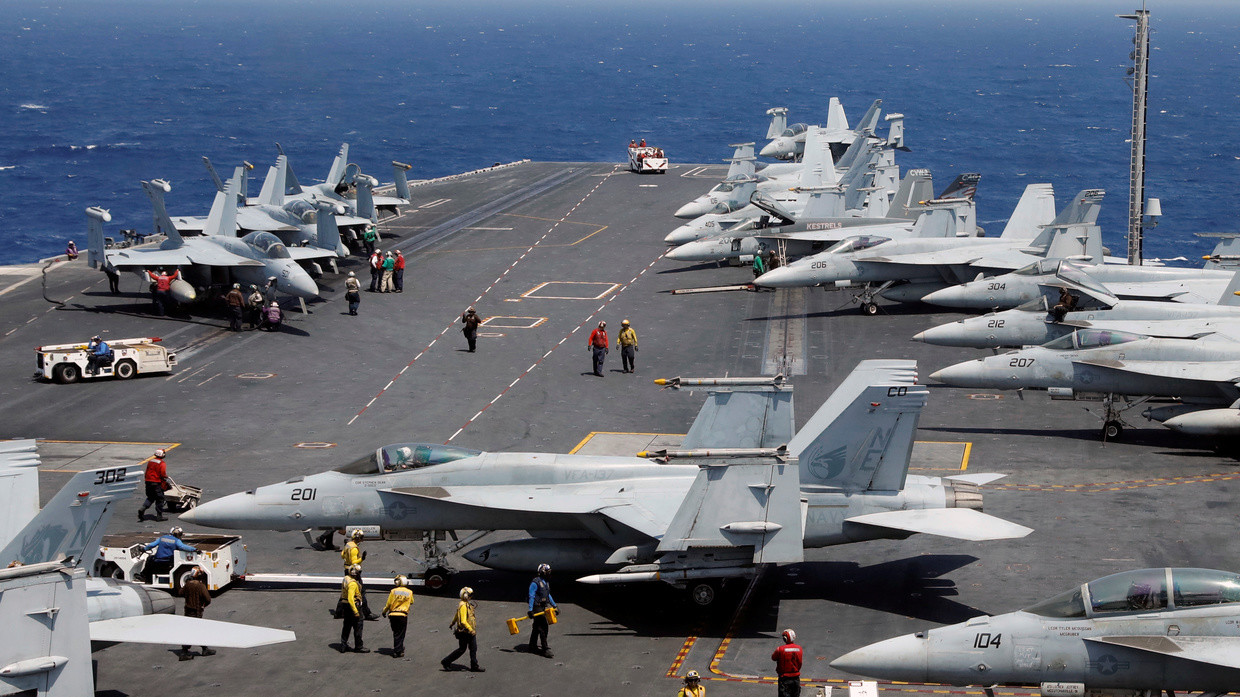
Global defense spending saw its largest annual increase in a decade in 2019, proving that the trend for bloated military budgets is here to stay – but expenditure doesn’t always correlate simply with power, analysts told us.
With military budgets peaking at a colossal $1.9 trillion last year (a 3.6 percent increase on 2018), it is clear that governments are still deeply in love with throwing massive amounts of money into the production and acquisition of the latest and fanciest new weapons of war. We have now reached the “highest level of spending since the 2008 global financial crisis,” according to the Stockholm International Peace Research Institute’s (SIPRI) latest annual report.
So, who are the biggest players, and more importantly, do their budgets really reflect their military capabilities and power?
The clearest trend from the latest SIPRI data is that the US is still leading the pack in terms of numbers, boosting its spending to record levels. Meanwhile, Asian powers like China and India spend far less, but are steadily building on earlier increases. After cuts in 2017 and 2018, US bugbear Russia also increased its spending by 4.5 percent in 2019, while fifth-biggest spender Saudi Arabia’s budget fell by 16 percent.
Spending by the top five military giants accounted for 62 percent of the total global expenditure of $1.9 trillion last year. Put another way, that equates to approximately $249 for every person on Earth.
Last year’s spending was also significant in another way, as it marked the first time that two Asian states (China and India) have featured in the top three spenders.
While the coming decades will certainly see China and India emerge as even more significant military powers, that “does not automatically nullify or decrease the role of other non-Asian military powers” like the US, which will remain the foremost military superpower “for the observable future,” Dmitry Suslov, deputy director at the Center for Comprehensive European and International Studies at HSE, told RT.
Likewise, the rise of Asia won’t diminish the power of Russia, which has “significantly improved its conventional military capabilities and modernized its nuclear capabilities,” Suslov added. Ultimately, we will probably see “a military multipolarity in the world with India and China being full-fledged members and full-fledged poles of the multipolar system.”
The US spent a gargantuan sum of $732 billion on its military in 2019, accounting for 38 percent of the global spend. Putting that in context, the budgets of the next four countries (China, India, Russia and Saudi Arabia) combined were still almost $300 billion less than Washington’s expenditure. Always eager to prove it has the deepest pockets when it comes to the military, the US has remained the top spender for several decades – but has it paid off?
The US is an example of a country which has spent a massive amount while experiencing a relative decline in power and capabilities, Suslov said.
“You can spend less money but do it wisely and effectively and you can spend a lot of money but less effectively and more irrationally – and in this case, your military capacity will be decreased,” he said. Effectiveness is key, “not just the sheer size” of the budget. For instance, Washington “wastes money on false priorities” like state-building in places like Iraq and Afghanistan, he added.
Steadily growing China
China allocated about $261 billion to its military last year. The Asian giant’s military expenditure has increased continuously since 1994. Taking a snapshot of the past decade, Beijing’s spend was 85 percent higher in 2019 than it was in 2010 – showing that the country’s growth in military spending has closely matched its recent economic growth.
Regional tensions in Asia and rivalry with Washington are clearly key drivers of Beijing’s growth in spending. With the Covid-19 crisis exacerbating US-China tensions even more, some Republicans in Congress are seeking to create a dedicated fund specifically designed to counter China as a rising military force.
China’s increasing budget is also a driver of higher spending in the wider Asian region, as its growing power forces other neighboring states to ramp up their own capabilities. For example, “Chinese military expenditure automatically translates to a rise in India’s spending,” Suslov said.
Another indicator that the US’ massive budget hasn’t translated into absolute superiority is the fact that China has managed to “asymmetrically challenge” Washington in the South China Sea and around Taiwan in recent years despite not boasting the same level of overall military might, Dinkar Peri, defense analyst and The Hindu journalist told RT.
Incoming India
India, which is now the world’s fifth-largest economy, had the third-largest defense budget in 2019 at $71.1 billion – representing a significant 6.8 percent increase over last year, overtaking both Russia and Saudi Arabia.
The country’s defense expenditure has grown 259 percent over the past 30 years (by 37 percent since 2010) – and the increase is “absolutely logical,” according to Suslov, since it is also a major growing economy.
“All great powers who pursue independent policies, who do not outsource their security and defense to the others, who refuse to accept the hegemony of the others obviously translate their economic success and rise into military power,” he said.
In addition, India finds itself in a “very uneasy regional and global environment” facing its traditional rivalry and struggle with Pakistan and now strategic competition with China, which makes it feel the “necessity to catch up,” Suslov added.
India’s armed forces have been undergoing modernization under Prime Minister Narendra Modi – and as the world’s second-largest arms importer, New Delhi purchases equipment from both Russian and Western manufacturers, balancing both East and West in a way that it hopes will give it a military edge in the region.
One of India’s main ambitions now is to build its own domestic defense capabilities. Though it still has limited abilities in this regard, it has made strides in recent years, setting a target goal of $5 billion in exports over five years
It’s also important to look at allocations within India’s spending, Peri said. The country has “a ballooning segment of military pensions.” In fact, pensions and salaries account for more than half of the country’s defence spending – the highest among the top spenders – leaving a much smaller budget for procurement of arms.
Transforming Russia?
Moscow was the fourth-biggest spender in 2019 with expenditure of $65.1 billion. Its military expenditure has grown significantly across the past 20 years, increasing in real terms by 30 percent between 2010 and 2019. Yet, while it is regularly framed by the US and its NATO allies as ‘the world’s greatest aggressor,’ Russia is the only country in the top five spenders whose budget has declined at all in recent years (seeing decreases in both 2017 and 2018). Overall, US spending was 11 times greater than Russia’s, while China’s was four times greater.
Russia is an example of a country which spends less money but allocates it more effectively and in a “much more targeted way,” Suslov said. Despite its relatively small military budget, Moscow has, for example, become a “global leader” in hypersonic and strategic nuclear weapons. Russia is also still “far more advanced and far ahead of China in terms of both nuclear force and conventional power projection capacity,” Suslov explained.
The gap between Moscow and Beijing will disappear in the next couple of decades and China will surpass Russia in terms of military capacity “but it will take time,” Suslov said.
Slipping Saudi Arabia
In fifth spot is Saudi Arabia with a $61.9 billion spend in 2019, falling 16 percent from third place the year before. The drop in 2019 was “unexpected” according to SIPRI, after Riyadh continued its military operations in Yemen and following increasing tensions with Iran after attacks on its oil fields in September which it blamed on Tehran. It seems falling oil prices may have forced Saudi Arabia to cut military spending.
While defense spending and conventional military might is usually seen as the best indicator of power, there are other factors to consider, too. “Investment and capabilities in hard infrastructure, and critical sectors like cyber, space and artificial intelligence” should be looked at in combination with military spending, Peri said.
Indeed, “defense spending” itself may be a misnomer, Phyllis Bennis, program director of the New Internationalism Project at IPS, believes. The term is used to make “military spending” sound more acceptable, when in fact protection of people is an entirely different thing. “Those are issues of healthcare, as we now know [with] this pandemic. It means taking care of the environment, it means jobs, education; those are the things that protect and defend people,” she said.
With total global spend of $1.9 trillion, it seems military expenditure in the pre-Covid-19 world had peaked – but following the pandemic and the resultant humanitarian and economic crisis that is expected to unfold, it looks more than likely that defense spending will decline in most places.
It seems certain, however, that given regional tensions and growing global competition between military superpowers like the US and China, the world’s top five big spenders are unlikely to change much over the coming decade.
Think your friends would be interested? Share this story!




The Bundeswehr decided to jettison inventory that does not fit new dispensers
The German military is auctioning off nearly 10,000 rolls of toilet paper that do not fit new dispensers at Bundeswehr facilities, local media reported on Monday.
According to a posting on the Vebeg online auction platform, which was picked up by the German TV network RTL, the Bundeswehr is offering a total of 12 pallets of toilet paper stored in 360 boxes that has a transport weight of over 3 tons.
While it is unclear when exactly the ad was posted, the auction is scheduled to last until May 31. The winning bidder will be able to pick up the toilet paper, which was produced by the Sweden-based company Tork, at the military barracks in the city of Wesel, not far from Munster in the northwestern part of the country.
Potential buyers will need to register with the military department where the inventory is being stored before coming to the premises to pick it up or view it, the ad reads.
Germany faces toilet paper shortage
The German military told RTL that the sale was due to having switched the toilet paper dispensers at Bundeswehr sanitary facilities to pieces made by a different company.
“However, the toilet paper from the first company cannot be used in a universal hygiene dispenser,” a Bundeswehr spokesman told the outlet.
According to RTL, the German military has also put printer toners, desks, and laptops up for sale.
The state of the Bundeswehr stocks of weaponry and other equipment and amenities has been an issue of concern in Germany. In March, Eva Hogl, who serves as the country’s parliamentary commissioner for the armed forces, claimed that the Bundeswehr “has too little of everything and it has had even less since February 24, 2022,” referring to when Russia started its military campaign in Ukraine. Since then, Berlin has provided massive military and economic support to Kiev.
She noted that the German army also lacked “functioning toilets, clean showers… indoor sports facilities, troop kitchens… and last but not least, wireless internet.”
Hogl also pointed out that the government had failed to spend any of the money from a €100 billion ($108 billion) special defense fund created last year in light of the Ukraine conflict.
You can share this story on social media:
PLEASANT MUSIC FOR YOUR CAFE, BAR, RESTAURANT, SWEET SHOP, HOME
SUITABLE MUSIC FOR YOGA LOVERS
Post Views:
833
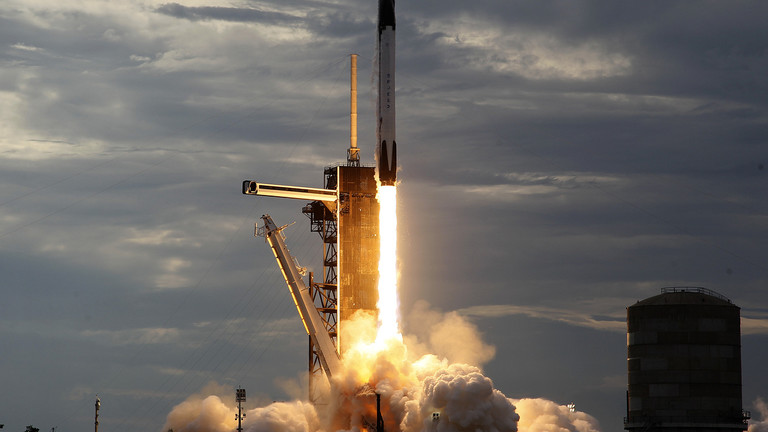
The Falcon 9 has successfully blasted off on a private mission carrying Saudi and American astronauts to the ISS
A SpaceX Falcon 9 rocket successfully launched from NASA’s Kennedy Space Center in Florida on Sunday, on a mission from the Houston-based company Axiom Space. It also carried the first Saudi woman to travel to the cosmos.
The mission, dubbed Ax-2, is Axiom’s second private mission bound for the International Space Station. The company utilized SpaceX’s Dragon spacecraft, named Freedom, to carry the crew and the Falcon 9 to deliver it from Earth’s atmosphere.
Shortly after liftoff, the first stage of the Falcon 9 rocket successfully performed a boost-back burn to SpaceX’s Landing Zone-1 and touched down safely about seven minutes and 45 seconds after launch.
The Dragon then detached from the Falcon 9’s upper stage some 12 minutes after liftoff and headed to the ISS to perform a docking scheduled for Monday.
Aboard Freedom are the first two Saudi Arabian nationals to travel to the ISS, including stem cell researcher Rayyanah Barnawi – the first Saudi woman ever to enter space. Joining the Ax-2 as mission pilot is businessman John Shofner, who paid out of his own pocket for the trip.
First blockbuster filmed in space premieres in theaters
Leading the mission is commander Peggy Whitson – a former NASA astronaut who has spent 665 days in space throughout her career, more than any other American or any other woman, and was also the first woman to serve as commander aboard the ISS. She currently works as Axiom’s director of human spaceflight.
The four-person crew is expected to spend eight days aboard the ISS, living and working alongside the seven astronauts currently residing there. They will also conduct independent research, including into how people that have not undergone rigorous training will react when first introduced to microgravity.
Axiom has announced plans to further develop commercialized spaceflight and even launch its own free floating private space station by the end of the decade. The first module of this future station is expected to be sent up to the ISS next year, with another three pieces to follow by the end of 2027.
You can share this story on social media:
PLEASANT MUSIC FOR YOUR CAFE, BAR, RESTAURANT, SWEET SHOP, HOME
SUITABLE MUSIC FOR YOGA LOVERS
Post Views:
845
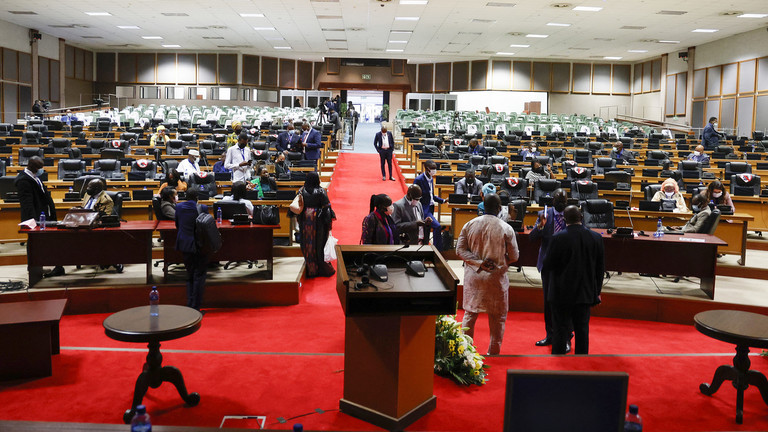
The move may prompt more African nations to ratify the Malabo Protocol, a political analyst told TSFT
Kenyan President William Ruto says his country will ratify the 2014 Malabo Protocol by September in a move towards making the Pan-African Parliament (PAP) an official legislative organ of the African Union (AU).
The Malabo Protocol seeks to convert the PAP into a full-fledged legislative body, which would hold jurisdiction over international and transnational organized crimes; in other words, creating an African international crimes court.
The protocol must be approved by at least 28 countries before it can enter into force. However, only 15 of the 22 signatories to the protocol in 2014 have ratified it, making Kenya the 16th.
Ken Bosire, a Kenyan political analyst, told RT that Nairobi’s decision to give the PAP legislative power is a “positive move” that could inspire other African leaders to follow suit. “The new president of Kenya seems to have some kind of persuasive sway among leaders of the region,” he added.
You can share this story on social media:
PLEASANT MUSIC FOR YOUR CAFE, BAR, RESTAURANT, SWEET SHOP, HOME
SUITABLE MUSIC FOR YOGA LOVERS
Post Views:
1,006



Global debt balloons to record highs

German military to sell tons of toilet paper

First female Saudi astronaut heads to space

Nigeria takes step to combat fuel shortages

US will default if debt deal fails – treasury secretary

Village People demand Trump stop using their music

Hollywood star pulls out of hosting awards show amid strike

Rock icon slams German authorities

Agatha Christie novels chopped by ‘sensitivity readers’ – media

Marvel star back in training after breaking over 30 bones

Turkish minister escapes fire blast (VIDEO)

Trump savages pop star’s Super Bowl performance

Alec Baldwin sued by Ukrainian family of slain cinematographer

Duran Duran stumbles, Dolly Parton rolls into Rock Hall

Sweden probes possible plot behind Russian pipeline leaks

FINANCE


Global debt balloons to record highs
It’s now $45 trillion higher than its pre-pandemic level and is expected to continue growing rapidly, a top trade body...


Nigeria takes step to combat fuel shortages
The West African country has built a giant oil refinery to cover domestic demand Nigeria will commission its new Dangote...
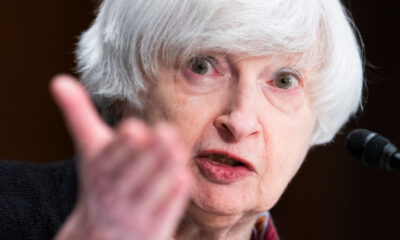

US will default if debt deal fails – treasury secretary
The current borrowing limit is a constraint on Washington’s ability to meet its obligations, Janet Yellen insists America’s chances of...


Facebook parent Meta fined €1.2 billion by Irish watchdog
The American tech company has been accused of violating EU data privacy rules US tech giant Meta has been hit...


UK’s business with sanctioned country booming
Trade between Britain and Iran has reached the highest level in a decade, according to official data, apparently having been...

POLITICS
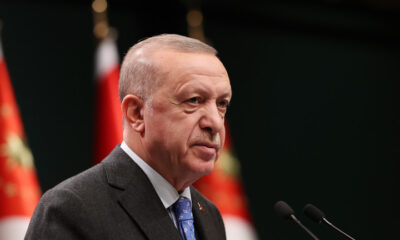

Erdogan election defeat would be ‘revenge’ – Syrian Kurds
The YPG claims the Turkish president failing to win another term would be payback for Ankara’s counter-terrorism operations in Syria...


Chinese special envoy meets with Zelensky
Li Hui visited Kiev to share Beijing’s views on a political settlement to the Ukraine crisis Ukrainian President Vladimir Zelensky...
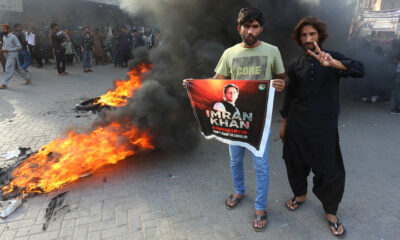

Pakistan’s top court orders release of former PM Imran Khan
Pakistan’s Supreme Court has ordered the release of former prime minister Imran Khan, whose arrest earlier this week triggered deadly...


Kamala Harris to run AI taskforce
The US vice president will ask AI execs to evaluate the safety and fairness of their models US Vice President...


Most Americans want to move on from Biden and Trump – poll
70% of respondents said the incumbent shouldn’t bid for office in 2024, with that figure 60% for the Republican former...

OPINION
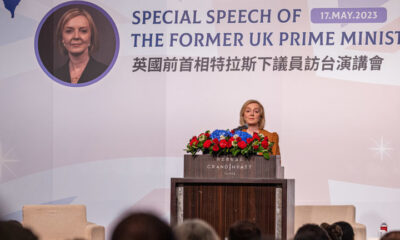

Disgraced ex-PM Liz Truss seeks to ruin any hopes for normal UK-China ties
The former premier’s Taiwan trip is nothing but a provocation for Beijing to lash out at London, sinking any constructive...


India facing challenge to steer SCO agenda away from Western-dominated frameworks
The Shanghai Cooperation Organisation is looking at ways to address the most pressing global issues without being a disruptive influence...


China isn’t the biggest threat to Italy’s prosperity
Rome is considering leaving the Belt and Road Initiative in a move which will place virtue signaling to other Western...


Meet the Czech lawyer who rallies thousands to shake up the EU establishment
In mid-April, a fledgling political party that recently formed in the Czech Republic called Pravo Respekt Odbornost (Law Respect Expertise;...


UK shows signs of good will to China, but it’s not the one calling the shots in this relationship
The British foreign secretary says antagonizing Beijing goes against London’s ‘national interests’, but Washington has other ideas British Foreign Secretary...

LIFE


conic Smiths bassist dies aged 59
The bassist with legendary English rock band The Smiths, Andy Rourke, has died at the age of 59, the group’s...


Village People demand Trump stop using their music
A viral video emerged last week of Donald Trump dancing to a Village People song at his Florida estate Village...


Hollywood star pulls out of hosting awards show amid strike
Drew Barrymore is stepping down as host of this year’s MTV Movie & Music Awards, due to be held on...
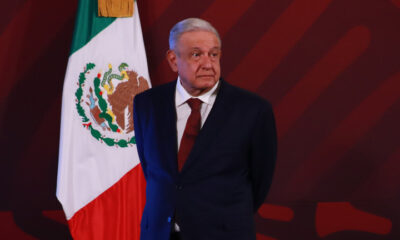

Mexico condemns US ‘interference’ in drug war
The DEA’s infiltration of the Sinaloa Cartel without state permission amounts to espionage, the Mexican president says Mexican President Andres...
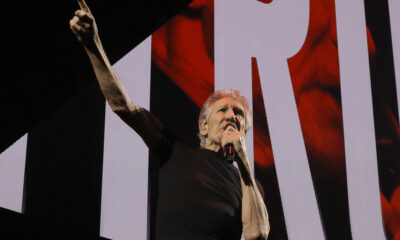

Rock icon slams German authorities
Pink Floyd co-founder Roger Waters criticized the city of Frankfurt for canceling his concert and vowed to take legal action...



Trending
-

 FINANCE12 months ago
FINANCE12 months agoFacebook parent Meta fined €1.2 billion by Irish watchdog
-
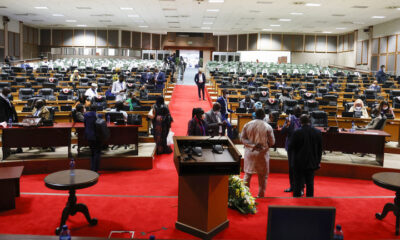
 NEWS12 months ago
NEWS12 months agoKenya supports creation of pan-African court
-

 FINANCE12 months ago
FINANCE12 months agoUS will default if debt deal fails – treasury secretary
-

 FINANCE12 months ago
FINANCE12 months agoGlobal debt balloons to record highs
-
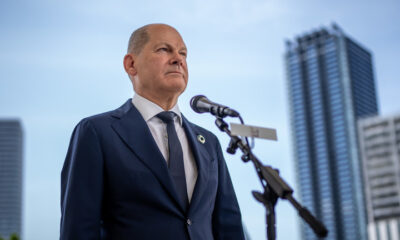
 WAR12 months ago
WAR12 months agoUkraine won’t join NATO anytime soon – Scholz
-

 NEWS12 months ago
NEWS12 months ago‘Subway killer’ Daniel Penny’s actions expose a gap in US law enforcement
-

 NEWS12 months ago
NEWS12 months agoGerman military to sell tons of toilet paper
-
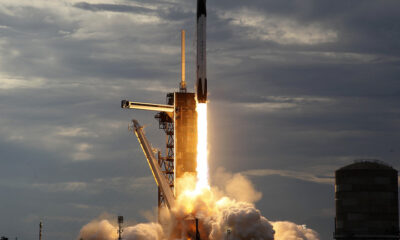
 NEWS12 months ago
NEWS12 months agoFirst female Saudi astronaut heads to space


